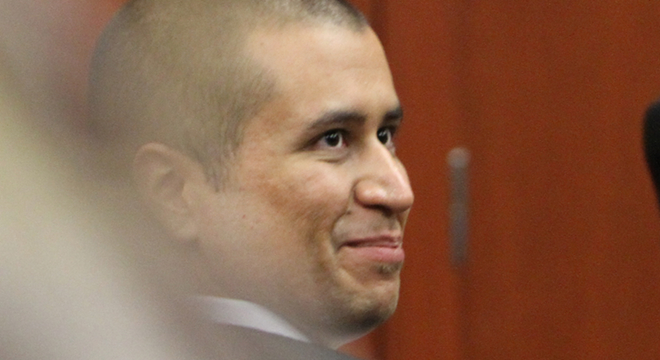It didn’t take an expert cryptographer or even a secret decoder ring to figure out George Zimmerman really wasn’t talking about Peter Pan during jailhouse phone calls with his wife in April.
In hushed conversations from a Seminole County, Fla., jail, the man charged with second-degree murder in the killing of unarmed teenager Trayvon Martin was instructing his wife how to transfer huge amounts of money between bank accounts and allegedly out of the gaze of local authorities.
The name “Peter Pan,” in this case, appears to have been code for the company PayPal. Zimmerman was using the online banking service to raise hundreds of thousands of dollars from supporters who believed he was either a hero of gun rights or a man being railroaded by a corrupt justice system.
Clumsy and obvious, the code was just one of several tactics that verged on the absurd that the Zimmermans used to try to keep their fundraising secret from authorities. The tactics were brought to light on Monday when prosecutors released audio recordings of six jailhouse phone calls between Zimmerman and his wife.
The calls, along with dozens of pages of bank records, showed the contortions the couple went through in April to keep their fundraising on the down low.
“Um, I asked Ken to double up on it, do, you know, $10 in the morning and then $10 in the evening,” George Zimmerman said to his wife during one of the calls released Monday. “And that way you can put, you know, into mine and then you can take uh 10 for you and 10 for her for Susie.”
“Okay, why can’t he just do both of ’em?” Shellie Zimmerman replied.
“Because he can only take it from Peter Pan to mine.”
“Oh okay, okay, right.”
But those efforts, prosecutors have since said, went from comical to criminal just a few days later when Shellie Zimmerman took to the witness stand at her husband’s bond hearing and claimed ignorance about how much had been raised using a homemade website and the PayPal account.
She did so, prosecutors allege, to trick the judge into letting her husband out of jail on a very low bond amount. This month, those same prosecutors charged Shellie Zimmerman with perjury, pointing to the calls as proof that she not only knew about the money but had been involved in its administration.
The newly released calls showed just how involved Shellie Zimmerman was in transferring money between bank accounts. In one phone call, she could be heard at what sounds like a bank. She even put her husband on the line with an employee there to make sure they had the right permissions in place for her to access their accounts.
Often, the couple used low dollar figures in their conversations. Prosecutors have said said that, too, was something of an unsophisticated code. In reality, the Zimmermans were referring to amounts that were 1,000 times higher than the figures they were using.
The calls and bank records appear to back that up. For example, George Zimmerman can be heard in one of the recordings making sure that his wife is transferring “less than $10” between accounts. In turn, bank records show, many of the transfers between accounts hovered just below $10,000. Sometimes they were just $1 or $10 below that threshold.
The specific amounts of those transfers, it turns out, may be even more problematic for the Zimmermans, too. For decades, there have been laws in place designed to fight money laundering that require banks to notify federal authorities any time a customer makes a cash transaction of $10,000 or more.
But because people eventually got around the law by cleverly using multiple transactions of $9,999 or less, the federal government later made it illegal to try to avoid detection by doing that.
It’s unclear whether that’s what the Zimmermans were trying to do by transferring such odd amounts between bank accounts. But the bank records clearly show a pattern. On April 16, for instance, the records show two transfers for exactly $9,999 and one for $9,990. Eight days later, the records show an eighth transaction of $9,999 and a ninth for $5,587.92.
Florida criminal defense attorney James Felman told TPM on Monday the figures definitely raise red flags.
“It certainly is odd that someone would persist in multiple transactions in an amount just under that threshold,” said Felman, who has no connection to the Zimmerman case and was speaking simply as an observer.
However, he also noted the law here was designed to flag suspicious cash transactions and it may not apply to electronic transfers between bank accounts like what the Zimmermans were doing. Still, he said, amounts would be enough to pique an investigator’s interests.
“It certainly is sufficiently suspicious to kind of call upon him to give an explanation for it,” Felman said.










